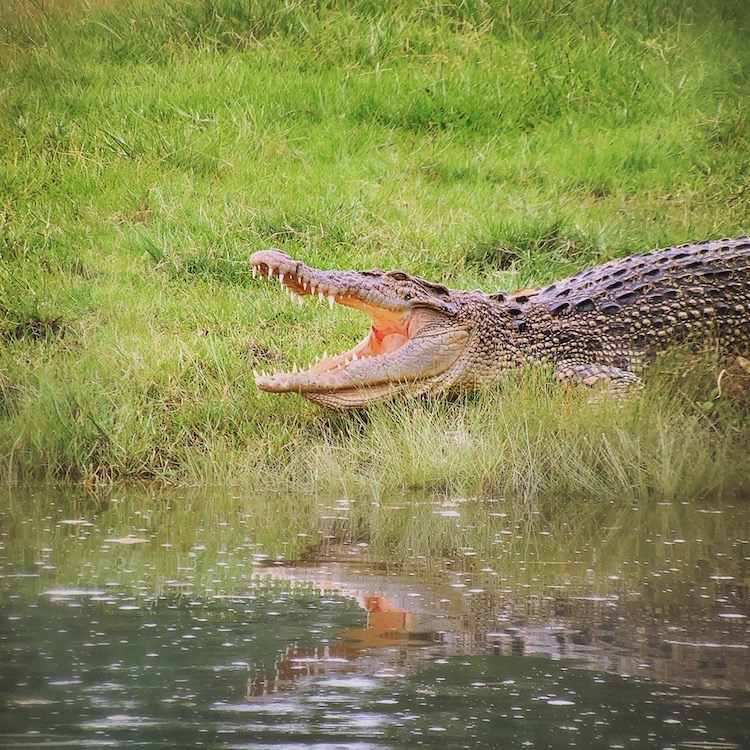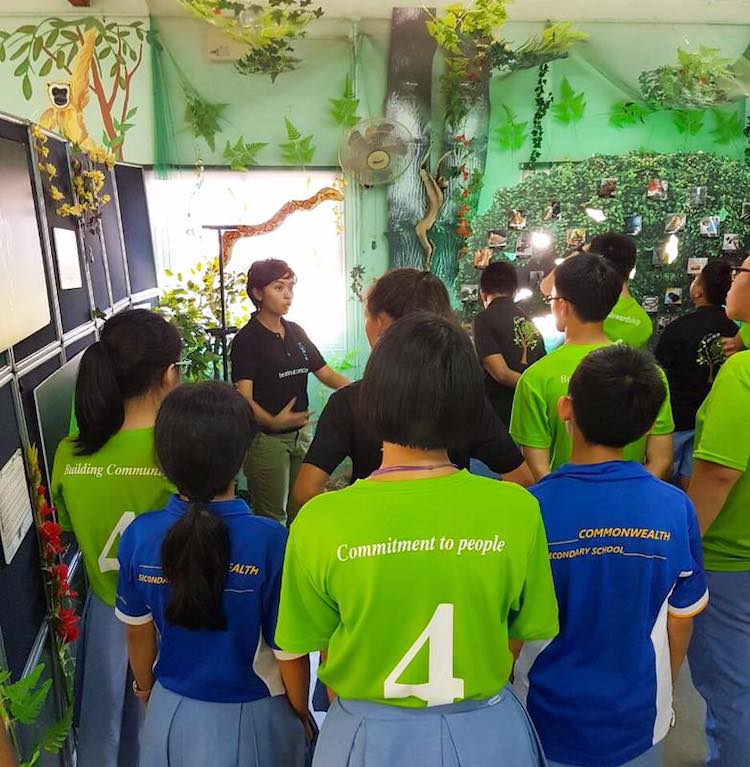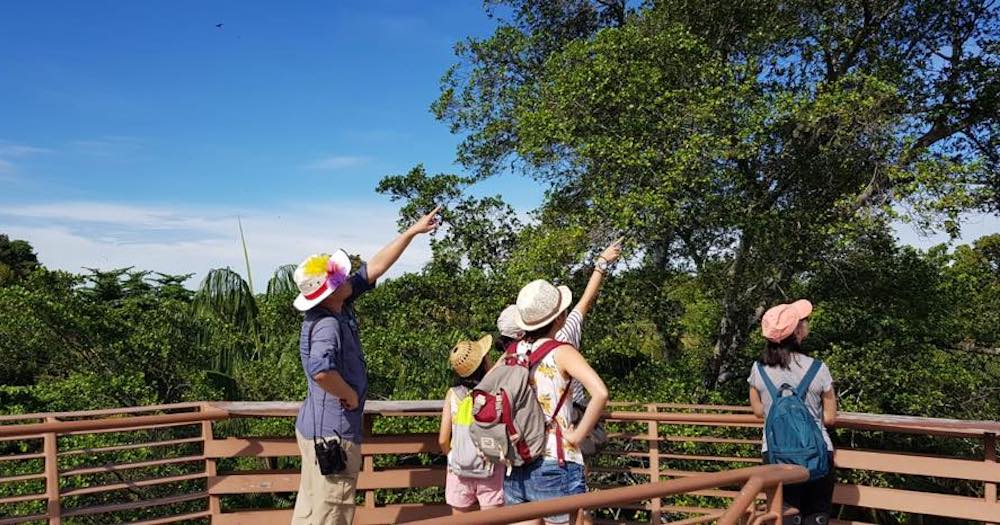Before I joined the nature scene in Singapore in 2014, I used to look forward to travelling overseas to see wildlife and enjoy "real nature".
I used to tell others that one would have to go overseas to experience unforgettable moments in nature, even though I spent very little or no time in our local green spaces.
But all this changed when I joined an internship in 2014, which gave me an insight into the local nature community.
By the end of the internship, I became more aware of the wildlife we share our city with, and how we can co-exist with them with little effort.
I also met people in the nature community, from all walks of life, who were working to raise awareness about wildlife in their own little ways.
Nature is just at our doorstep
As an undergraduate student, I decided to take up an internship as a way for me to gain experience during the summer holidays and earn some extra cash.
Even though I had zero experience with native wildlife, I knew I did not want to work in an office setting as an intern, so I signed up for an internship with Ria Tan, a veteran naturalist who runs the page called "WildSingapore".
Under the internship, my job scope included managing guided nature walks under a volunteer-run nature group, Naked Hermit Crabs, at Pasir Ris Park and Chek Jawa Wetlands, Pulau Ubin, and even planning workshops to train nature guides for our marine park on Sisters' Island Marine Park.
Through the internship, I realised how there was wildlife in our green spaces and every neighbourhood, as our city's urban spaces are filled with greenery.
It's actually quite easy to take all the greenery for granted, especially when you're so used to seeing it all around you.
Sure, other countries might have large national parks with mountains and waterfalls, but Singapore has a variety of flora and fauna at your doorstep, without having to drive for a few hours out of a city.
Wide variety of flora and fauna in Singapore
During my time with Tan, I learnt about a large variety of native plants and animals we have on our tiny island.
Some of them included insects, such as bees, which according to the National Parks Board (NParks), we have more than 130 species of bees on our tiny island.
 Photo by Sumita Thiagarajan
Photo by Sumita Thiagarajan
Sometimes, you might even spot a beautiful spider, such as this kidney garden spider.
 Photo by Sumita Thiagarajan
Photo by Sumita Thiagarajan
Snakes are one of my favourite animals, which I find to be extremely beautiful and have never had a negative experience with, as I always kept a safe distance from them.
One should keep a safe distance from all wild animals, such as this Oriental Whip Snake:
 This snake was pretending to be a vine and was camouflaged amongst leaves and vines while taking shelter from the rain under a leaf. Photo by Sumita Thiagarajan
This snake was pretending to be a vine and was camouflaged amongst leaves and vines while taking shelter from the rain under a leaf. Photo by Sumita Thiagarajan
We also have larger reptiles, such as Estuarine Crocodiles.
Here's one I spotted at Sungei Buloh Wetland Reserve:
 Photo by Sumita Thiagarajan
Photo by Sumita Thiagarajan
Even on this tiny island, we're home to over 390 species of birds, such as this Striated Heron I spotted at Botanic Gardens.
 Photo by Sumita Thiagarajan
Photo by Sumita Thiagarajan
Encountering people who fear wildlife that are less likeable
After my internship and graduating from university, I worked for two years at animal welfare charity Acres.
During my time with Acres, I gave talks at schools and engaged members of the public at roadshows to teach people what to do when they encounter wildlife in Singapore.
Often before these talks or workshops, students or members of the public had little or no knowledge or understanding of local flora and fauna.
While they knew about non-native animals they had seen in books or on television growing up, such as toucans and komodo dragons, they did not know the names of hornbills or monitor lizards, which are local counterparts found in Singapore.
These sessions with Acres were the first time many learnt the name of our local wildlife, which most were amazed by.
Some animals have been misunderstood by people
Some people I met also had a wide range of misconceptions about wild animals such as snakes.
Many would gasp or freak out at the presentation slides or videos of snakes or reptiles (that they deem as 'dangerous'), even though they had never seen or encountered these reptiles before.
Apart from their appearance, people often tell me of stories they had heard from others, or shows they had seen, where these creatures were painted as being scary and extremely harmful to humans.
While I have never been afraid of insects or snakes before learning about Singapore's wild inhabitants, I too often encountered misconceptions about these creatures through pop culture.
One example is the movie "Snakes on a Plane", in which snakes are painted as animals that actively seek out humans to injure and kill.
In reality, this is not the true nature of these creatures, which I came to encounter on a regular basis and have even handled for wildlife rescue, and have never been injured or bitten by one.
Snakes are now one of my favourite animals, and I am committed to debunking misconceptions that people might have about them.
Correcting misconception is not easy
For those who were unaware of the natural behaviours of wild animals, I would find ways to help them relate to these animals.
For example, I would often ask them what a human mother might do if a stranger approached their child and tried to grab them. Most of the audience would say that the human mother would try to protect her child.
I would then ask them what do you think a monkey mother or wild boar mother might do if you approach their young, and the audience would make the connection and realise that these creatures would do the same as a human mother and try to protect their children.
This was an effective way of getting young children or even adults to understand the importance of observing wildlife from a distance, and that animals are similar to humans in many ways.
 Me (in a black shirt) talking to students about our native wildlife. Photo by Tan Guan Rui Jacob
Me (in a black shirt) talking to students about our native wildlife. Photo by Tan Guan Rui Jacob
Despite our efforts to allay people's fears with facts about the animals, it was often hard to convince people why they should leave wild animals alone or not be fearful of them.
For example, this striped kukri snake that I helped rescue from a preschool is non-venomous but the preschool staff were very worried for the children's safety.
 A chill non-venomous striped kukri snake found in a preschool. Photo by Sumita Thiagarajan
A chill non-venomous striped kukri snake found in a preschool. Photo by Sumita Thiagarajan
The staff had the children kept out of the room where the snake was while waiting for Acres rescue officers to arrive.
To me, this was actually the perfect teaching moment to educate the children about the species.
While the staff were not totally convinced at the end of it that the snake is harmless, they were a bit more accepting of the fact that as long we do not threaten them in any way, they would not attack us.
This is especially after seeing an Acres staff handling the snake in a pretty chill manner.
Lack of awareness leads to unfounded fear
From my volunteering and working experience, most children or adults do not know much about wildlife in Singapore, as we never learn enough about these animals or encounter them from a young age.
The only time we encounter "wild animals" is usually at the zoo, where the experience is very different, compared to encountering wild animals in their natural habitat.
On some instances, when I asked children where they think wild animals should be, and they exclaimed the word "zoo".
I had also met people who commented that healthy wild animals should be sent to the zoo or bird park during rescue calls, often as they had thought these animals had escaped from these places.
Often, these folks were surprised to learn that these animals are all around us or exist near or in our residential areas.
In response, we had to explain to them that these creatures are found in the wild in Singapore, or even in urban areas, and that if a wild animal is healthy, they can be left in their natural habitat.
 A rescued owl. Photo by Sumita Thiagarajan
A rescued owl. Photo by Sumita Thiagarajan
During the Circuit Breaker period, as most people were working from home, some started spending more time around their neighbourhoods and encountering wildlife near their home.
Residents saw monkeys in their estate in Jurong West, while others came across otters in our urban areas, like the otter family seen outside Mustafa.
However, when wildlife came too close for comfort, the immediate response from some people was to remove them from our environment.
The solution? Reconnect & co-exist.
I believe the simple solution to co-existing with wildlife is to reconnect with nature and learn more about our native plants and animals.
There's a bit of luck involved with spotting wildlife, such as this lucky family in Sengkang was lucky to have sunbirds nest in a plant at their HDB corridor, which allowed them to learn about these wild birds.
For the rest of us, we can learn about our wildlife through guided nature walks.
When we understand how wild animals really behave, we can co-exist even with venomous snakes, such as this cyclist who calmly gave way to this spitting cobra at Jurong Lake Gardens.
As Prime Minister Lee Hsien Loong previously said, Singapore will continue to expand our green areas and "rather than being focused on protecting 'territory', we must find ways to coexist and thrive with our local flora and fauna".
So go forth and be curious in nature, while maintaining a safe distance from wild animals, and maybe you'll fall in love with the natural world and our green city, just as I have.Top image via Naked Hermit Crabs.
If you like what you read, follow us on Facebook, Instagram, Twitter and Telegram to get the latest updates.
